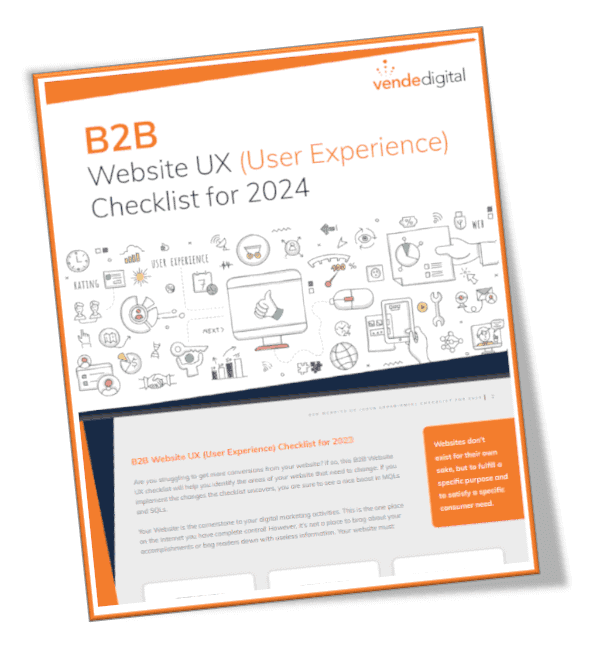When consumers use their smartphones to get answers to any real-time challenges in their daily routines, they’re not just searching for product info and prices, short-cuts around traffic jams, or quick-and-easy recipes for that night’s dinner.
They’re engaging in what Google calls “micro-moments,” brief detours on the consumer journey that are solved by mobile devices. As it happens, those micro-moments provide maximum opportunities for businesses. That’s the result of the search giant’s recent research into digitally-driven shopping and info-gathering habits. Yet it could also be seen as the overriding theme at last week’s Google Partner Summit in San Francisco.
The Summit is the company’s annual gathering for digital marketing specialists like Vende Digital that are part of the Google Partners program. The company shares its latest data, stages panel discussions on tactics and strategies, and hosts breakout sessions on how to use Google’s formidable array of marketing/analytical products and services. Like the other attendees, I enjoyed the chance to network with online marketing colleagues from around the country and soak up knowledge that I’ll use on behalf of clients. Yet as the Summit went on, it became clear to me that these micro-moments offer the best chances for smart marketers to move up the funnel and get in front of potential customers when they need the most help. According to Google’s research:
- 82 percent of those surveyed have used a smartphone to influence a purchasing decision while in a physical store.
- 65% of smartphone users agree that when conducting a search on their smartphones, they look for the most relevant information regardless of the company providing the information.
- 1 in 3 smartphone users has purchased from a company or brand other than the one they intended to because of information provided in the moment they needed it.
My takeaways from the summit all play into the micro-moments theme:
Did Somebody Mention Mobile?
Mobile is at the heart of micro-moments. It’s where they happen. More data is coming in from a variety of sources on how mobility impacts consumer behaviors, and Google’s analytics team is leading the way. Their researchers have found it’s not just shopping, map apps and last-minute searches for yummy crockpot recipes. Google is also taking a global view, releasing data on how mobile searches are affecting immediate and long-term consumer needs.
Businesses who take mobile seriously will outperform those who don’t…period. Therefore, you need to ask yourself:
- How well does your website show up on a smartphone or tablet screen?
- How fast does it load?
- Is it optimized for mobile shopping?
- Easy to navigate?
Ever since Google admitted last year that more of their searches are now done from mobile devices than desktop computers, those questions loom larger for businesses – especially when you consider that half of mobile users will ditch a shopping site if it doesn’t load in 3 seconds or less.
Earlier this year, Google introduced platform-agnostic Accelerated Mobile Pages (AMP) as a beta product in an attempt to get mobile pages to load faster.
You can test your site here
If There’s No Video, It Didn’t Happen
More than half of YouTube views now come from smartphones and tablets, and it’s not just whatever music video or Mannequin Challenge is burning up the charts. Google says 53 percent of smartphone users love it when companies offer video content on mobile sites or apps. That could include demonstration videos for certain products or short clips showing how those crockpot recipes I mentioned earlier are prepared.
The most desirable demographic groups for marketers and advertisers are turning YouTube into their own customizable network. The company says it reaches more users 18-34 and 18-49 than any U.S. cable channel – and that’s just on the YouTube mobile platform. Companies now have to consider not just establishing their own YouTube channel for current and potential customers, but populating it on a regular basis with relevant, compelling videos.
From Mobile First to AI First (or Siri, Call Google Now)
Can search keywords be spoken? Absolutely, and that’s where the worlds of mobility, SEO and artificial intelligence/voice recognition are expected to collide any day now. Virtual assistants like Siri, Google Now and Microsoft’s Cortana get you information on your mobile device without the need for typing, so businesses will have to figure out the best spoken ways to rise in search rankings.
Northstar Research says more than half of teenagers and adults they surveyed now use voice search every day, and it’s a good bet those people are speaking their searches in different ways than when they’re typed onto a screen. Marketers and businesses now get to figure out exactly how they’re asking for help so they can be the first to offer assistance.
Earlier this year, Google released an experimental feature for Google Now that uses categories of interest to help personalize the virtual assistant’s search results. Every tweak to this particular use of technology offers brands more opportunity to get in front of customers.
Google’s Got the Tools, We’ve Got the Talent
The Partner Summit gave Google a chance to show off some relatively new advertiser/marketer tools that could be powerful enablers for your business.
Cross-Platform Remarketing: In September, Google announced a new cross-platform remarketing feature that lets advertisers present ads across users multiple devices. Before, advertisers had to wait for a signed-in customer to visit on each device and then rely on mobile IDs or cookies to find that user. Early adopters are seeing an nice boost in conversion rates as consumers often use multiple devices during the research phase of the buying process.
Attribution 360: The company also is tweaking its AdWords product to let advertisers differentiate their bids based on device, and has introduced Attribution 360, which allows marketers more insight into how offline behaviors are affected by their online campaigns. Many people search for product info online but still buy in a physical store, so Attribution 360 should provide more clues into whether a Facebook contest or email campaign resulted in an in-store sales boost – and by how much.
Google’s Partner Summit made it clear to me that the company is on the front lines of the mobile revolution. The businesses that position themselves at those intersections in the buyer’s journey – where consumer desire meets mobile fulfillment – will stand the greatest chance of success.

